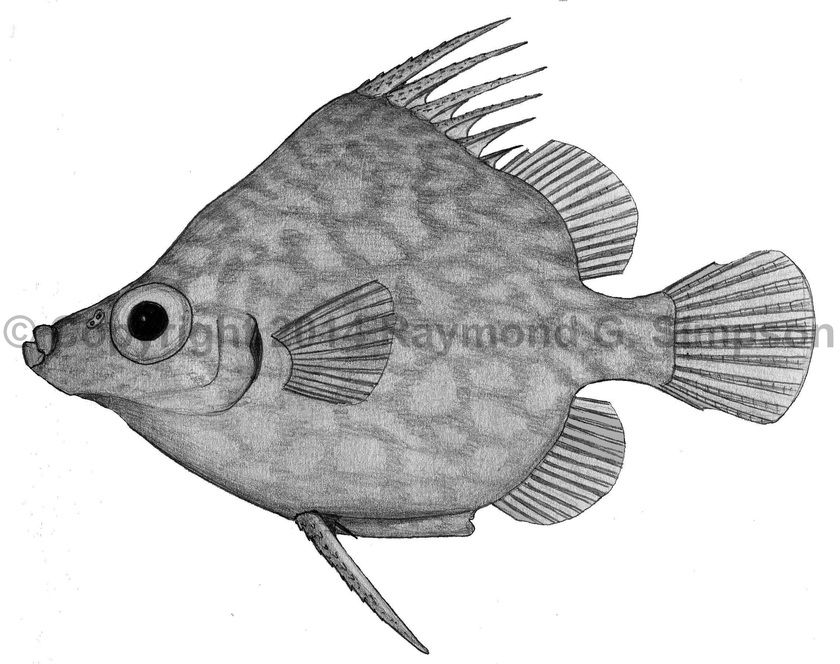
Common Name
Reticulate Spikefish
Year Described
Poey, 1861
Identification
Dorsal Fin: VI, 16-18
Anal Fin: 14-16
Pectoral Fin: 12-15
Pelvic Fin: I, 1-2
Gill Rakers: 15-20 (first arch)
Jaw teeth in a single row (6-11 upper, 7-12 lower). Dorsal fin origin over or posterior to gill slit. Scales with ~3 denticles.
Color
Body pale yellowish to pinkish, overlain with a reticulate network of thick red lines or covered in diffuse brownish-red blotches. Peritoneum tan with black speckles.
Size
Maximum size to 18 cm SL.
Habitat
Found near the bottom in deep waters (230-915m).
Range
Scattered records from southern Florida to the northern coast of South America. Also Bermuda. Reported from Brazil (Lopes et al., 2009) and off Georges Bank, Newfoundland (Tyler et al., 2013).
References
Lopes, P.R.D., J.T. de Oliveira-Silva, C. da Cruz Martins, and G. Olavo. 2009. Hollardia hollardi Poey, 1861: First record of family Triacanthodidae (Actinopterygii: Tetraodontiformes) from Brazilian waters. Interciencia 34 (3): 199–201.
Matsuura, K. 2002. Triacanthidae (pp 1960-1962). In: Carpenter. 2002. The living marine resources of the Western Central Atlantic. Vol. 3: Bony fishes part 2 (Opistognathidae to Molidae), sea turtles and sea mammals. FAO Species Identification Guides for Fisheries Purposes. American Society of Ichthyologists and Herpetologists Special Publication No. 5.
McEachran, J.D. and J.D. Fechhelm. 2005. Fishes of the Gulf of Mexico. Volume 2: Scorpaeniformes to Tetraodontiformes. University of Texas Press, Austin. i-viii +1-1004.
Tyler, J. C. 1966. A new species of triacanthodid Plectognath fish from the Caribbean, Hollardia meadi. Notulae Naturae (Philadelphia) No. 382: 1-8.
Tyler, J.C., B.B. Collette, and E.A. Broughton. 2013. Northern Range Extension to Georges Bank for Hollardia hollardi (Reticulate Spikefish) (Triacanthodidae, Tetraodontiformes). Northeastern Naturalist 20 (4): 33-36.
Woods, L. P. 1959. Parahollardia schmidti, a new triacanthodid fish from the western Caribbean. Copeia 1959 (no. 3): 222-225.